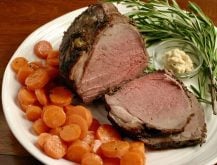BLOOMFIELD, Ont. – Ask 77-year-old Irene Hagerman the formula for 100 years of success at Hagerman Farms and she offers a simple answer.
“Hard work, loving what you do and being willing to jump when opportunity knocks,” she said.
Looking at the history of the dairy and vegetable farm purchased in 1905 by Lyle Hagerman’s grandfather, another way to phrase the answer could be: be prepared to adapt when times change.
The operation started as a beef cattle and dairy farm, moved into vegetables, added and subtracted various attempts at animal production and new crops. It continues to balance itself between a fresh vegetable roadside market and a small 26-milker dairy herd.
Read Also

Rural Manitoba resources slim on natural disaster planning
A study from Brandon University’s Rural Development Institute has found that many rural and small municipalities don’t have the staff or resources to make formal climate plans against natural disaster.
“I would say revenues are about half-and-half between vegetables and dairy, but dairy is the mainstay because it is steady income and it is year round,” said Lyle, also 77.
Along the way, new crops have been tried and sometimes discarded, a dairy value-adding operation brought in income for years and an end to the local canning industry forced a move to fresh vegetables and a popular roadside stand.
Now, sons Peter and Paul continue the tradition of flexibility by venturing into the pedigreed seed business and operating a mobile sawmill and a firewood business.
“The summers are hectic,” Lyle said. “Milking starts early and after that vegetables are picked every morning and the stand is ready to open at 9:45. By the time we finish the evening milking, it has been a long day.”
The Hagerman vegetable stand, prominent in the Picton-Bloomfield area of Prince Edward County, is a couple of hours drive east of Toronto and stocks seasonal produce until the end of October. It is featured in a 2006 “naked farmers” calendar that includes Lyle and Irene, family members and staff showing skin behind the vegetable displays.
The 375 acre farm, plus some rented land, produces 100 acres of vegetables and enough feed to keep the dairy herd in fuel.
“It is a good operation,” Lyle said. “It is balanced. The vegetable business is bigger in the summer but dairy is what keeps us through the year.”
His sons, who now are the fourth generation of Hagermans to run the farm, continue to broaden the base.
Both Lyle and Irene come from a long line of ancestors ready to take risks. Their families were United Empire Loyalists who moved from Pennsylvania into the wilderness area of then-Upper Canada after the end of the American Revolution in 1785 to stay loyal to the crown.
Irene and Lyle were the third generation to run the farm after they married in 1955 and they quickly decided to innovate.
Soft ice cream was a 1950s phenomenon and Dairy Queen franchises were getting started.
Across the road from the farm in 1955, they established the first soft ice cream stand in the area, using their own dairy operation as a source of cream. It was a profitable value-added business for them until they sold the store in 1986, only to watch it go out of business a few years later.
“That was sad,” said Irene. “It was a good business but we sold it to the wrong guy. We should have known. He wasn’t that successful in his former business.”
The Hagermans also faced a crisis when the vegetable canning business began to consolidate and close local canneries through the 1960s and 1970s.
“That was our main business, growing for the canneries,” said Lyle. “But that business died.”
So the family huddled and decided to try the fresh vegetable market, setting up a roadside stand 15 years ago.
“Like Topsy, it just growed,” laughed Irene. “It is very busy.”
Of course, not every business decision has hit the mark over the years.
For several years, the farm experimented with a canola variety.
“The first year, it burnt up, the second year wasn’t good and the third year it moulded, so that was that,” Lyle said.
Sunflowers were another misfire.
Now, they mainly stick with what works – fresh seasonal produce that keeps customers coming back.
“We get some tourists but mainly it is local people and mainly repeat customers,” he said.
“It is the best advertising.”














